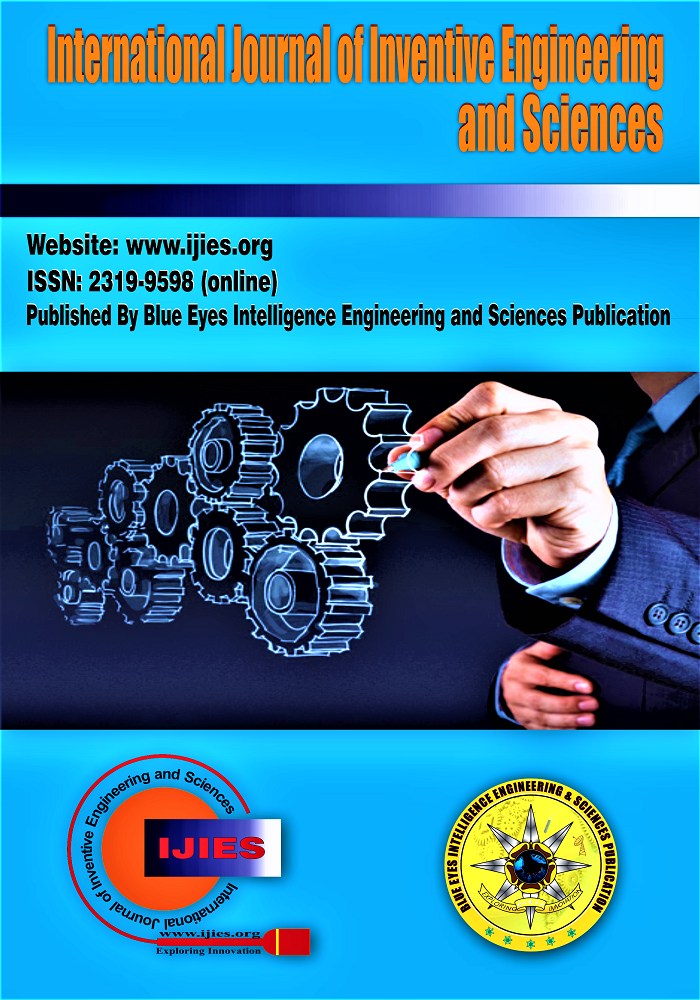Heart Disease Prediction Classification using Machine Learning
Main Article Content
Abstract
Heart disease is a leading cause of mortality worldwide, and early detection and accurate prediction of heart disease can significantly improve patient outcomes. Machine learning techniques have shown great promise in assisting healthcare professionals in diagnosing and predicting heart disease. The diagnosis and prognosis of heart disease must be improved, refined, and accurate, because a small mistake can cause weakness or death. According to a recent World Health Organization study, 17.5 million people die each year. By 2030, this number will increase to 75 million.[2] This document explains how to enable online KSRM capabilities. The KSRM smart system allows users to report heart-related problems. This research paper aims to explore the use of machine learning algorithms for effective heart disease prediction classification with Adaboost for improve the accuracy of algorithm.
Downloads
Article Details
Section

This work is licensed under a Creative Commons Attribution-NonCommercial-NoDerivatives 4.0 International License.
How to Cite
References
Sharma, H., & Rizvi, M. A. (2017). Prediction of heart disease using machine learning algorithms: A survey. International Journal on Recent and Innovation Trends in Computing and Communication, 5(8), 99-104.
Balakumar, P., Maung-U, K., & Jagadeesh, G. (2016). Prevalence and prevention of cardiovascular disease and diabetes mellitus. Pharmacological research, 113, 600-609. https://doi.org/10.1016/j.phrs.2016.09.040
Gradman, A. H., & Alfayoumi, F. (2006). From left ventricular hypertrophy to congestive heart failure: management of hypertensive heart disease. Progress in cardiovascular diseases, 48(5), 326-341. https://doi.org/10.1016/j.pcad.2006.02.001
Yin, K. S. (2019). Network Behavioral Analysis for Detection of Remote Access Trojans (Doctoral dissertation, MERAL Portal).
Long, N. C., Meesad, P., & Unger, H. (2015). A highly accurate firefly based algorithm for heart disease prediction. Expert Systems with Applications, 42(21), 8221-8231. https://doi.org/10.1016/j.eswa.2015.06.024
Tomar, D., & Agarwal, S. (2013). A survey on Data Mining approaches for Healthcare. International Journal of Bio-Science and Bio-Technology, 5(5), 241-266. https://doi.org/10.14257/ijbsbt.2013.5.5.25
Tasnim, F., & Habiba, S. U. (2021, January). A comparative study on heart disease prediction using data mining techniques and feature selection. In 2021 2nd International Conference on Robotics, Electrical and Signal Processing Techniques (ICREST) (pp. 338-341). IEEE https://doi.org/10.1109/ICREST51555.2021.9331158
Killana Sowjanya, Dr G. Krishna mohan (2020). predicting heart disease using machine learning classification algorithms and along with TPOT, International Journal of Scientific & Technology Research 9(4).3202-3210
Gokulnath, C. B., & Shantharajah, S. P. (2019). An optimized feature selection based on genetic approach and support vector machine for heart disease. Cluster Computing, 22, 14777-14787 https://doi.org/10.1007/s10586-018-2416-4
Chandra, I., Sivakumar, N., Gokulnath, C. B., & Parthasarathy, P. (2019). IoT based fall detection and ambient assisted system for the elderly. Cluster Computing, 22, 2517-2525. https://doi.org/10.1007/s10586-018-2329-2
Tomar, D., & Agarwal, S. (2014). Feature selection based least square twin support vector machine for diagnosis of heart disease. International Journal of Bio-Science and Bio-Technology, 6(2), 69-82. Tomar, D., & Agarwal, S. (2013). A survey on Data Mining approaches for Healthcare. International Journal of Bio-Science and Bio-Technology, 5(5), 241-266. https://doi.org/10.14257/ijbsbt.2014.6.2.07
Magesh, G., & Swarnalatha, P. (2021). Optimal feature selection through a cluster-based DT learning (CDTL) in heart disease prediction. Evolutionary intelligence, 14, 583-593. https://doi.org/10.1007/s12065-019-00336-0
Ali, F., El-Sappagh, S., Islam, S. R., Kwak, D., Ali, A., Imran, M., & Kwak, K. S. (2020). A smart healthcare monitoring system for heart disease prediction based on ensemble deep learning and
feature fusion. Information Fusion, 63, 208-222. https://doi.org/10.1016/j.inffus.2020.06.008
Hossen, Mohammed Khalid. (2022). Heart Disease Prediction Using Machine Learning Techniques. American Journal of Computer Science and Technology. Vol. 5, No. 3, 2022,. 146-154. 10.11648/j.ajcst.20220503.11.
El Hamdaoui, H., Boujraf, S., El Houda Chaoui, N., Alami, B., & Maaroufi, M. (2021). Improving Heart Disease Prediction Using Random Forest and AdaBoost Algorithms. International Journal of Online & Biomedical Engineering, 17(11). https://doi.org/10.3991/ijoe.v17i11.24781
Rahman, M. M. (2022). A web-based heart disease prediction system using machine learning algorithms. Network Biology, 12(2), 64.
A., T., & C., M. (2020). A Survey on Deep Learning Architectures and Frameworks for Cancer Detection in Medical Images Analysis. In International Journal of Innovative Technology and Exploring Engineering (Vol. 9, Issue 11, pp. 28–34). https://doi.org/10.35940/ijitee.k7654.0991120
Kanani, P., & Padole, Dr. M. (2019). Deep Learning to Detect Skin Cancer using Google Colab. In International Journal of Engineering and Advanced Technology (Vol. 8, Issue 6, pp. 2176–2183). https://doi.org/10.35940/ijeat.f8587.088619
R, R., & S H, M. (2021). Plant Disease Detection and Classification using CNN. In International Journal of Recent Technology and Engineering (IJRTE) (Vol. 10, Issue 3, pp. 152–156). https://doi.org/10.35940/ijrte.c6458.0910321
Wanjau, S. K., Wambugu, G. M., & Oirere, A. M. (2022). Network Intrusion Detection Systems: A Systematic Literature Review o f Hybrid Deep Learning Approaches. In International Journal of Emerging Science and Engineering (Vol. 10, Issue 7, pp. 1–16). https://doi.org/10.35940/ijese.f2530.0610722
CNN based Image Classification Model. (2019). In International Journal of Innovative Technology and Exploring Engineering (Vol. 8, Issue 11S, pp. 1106–1114). https://doi.org/10.35940/ijitee.k1225.09811s19





